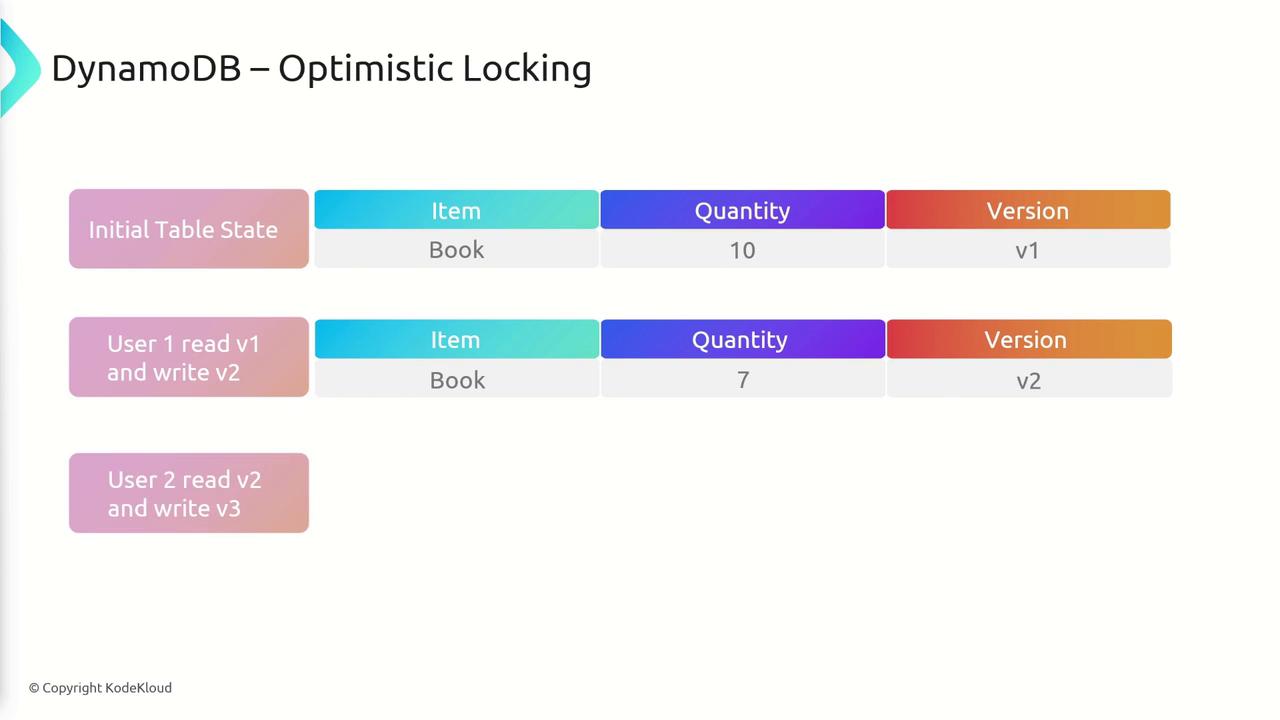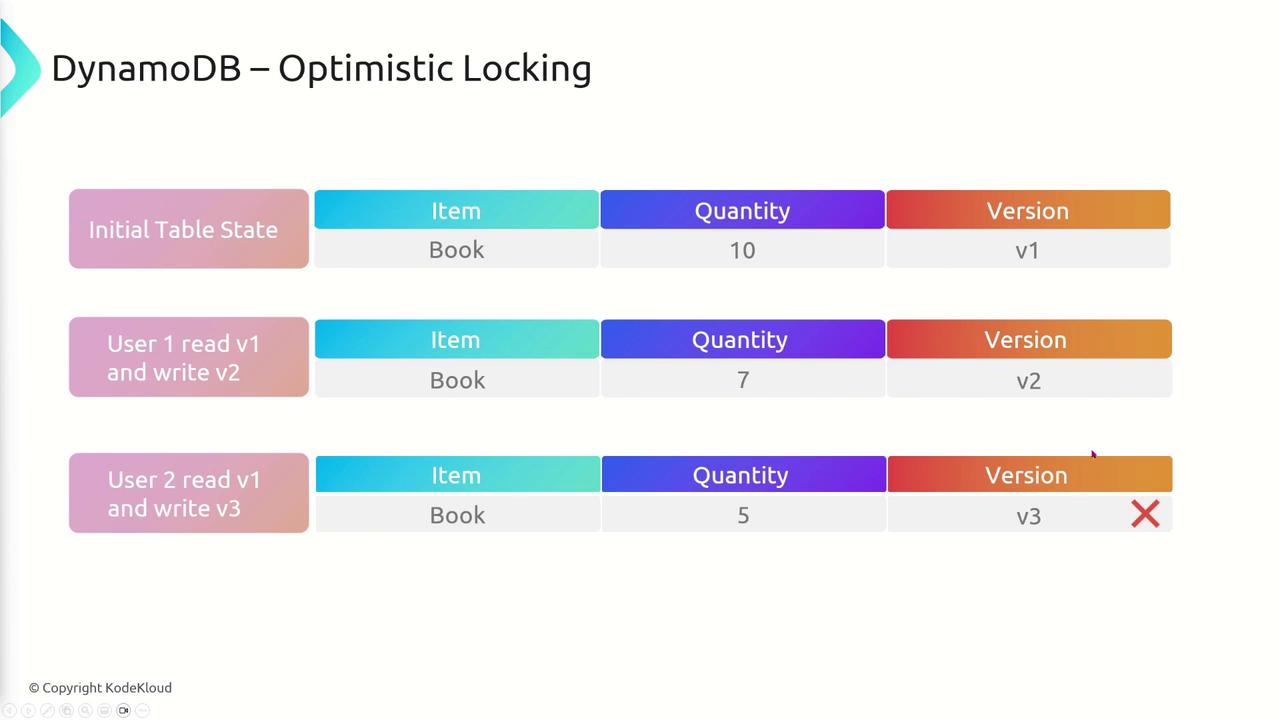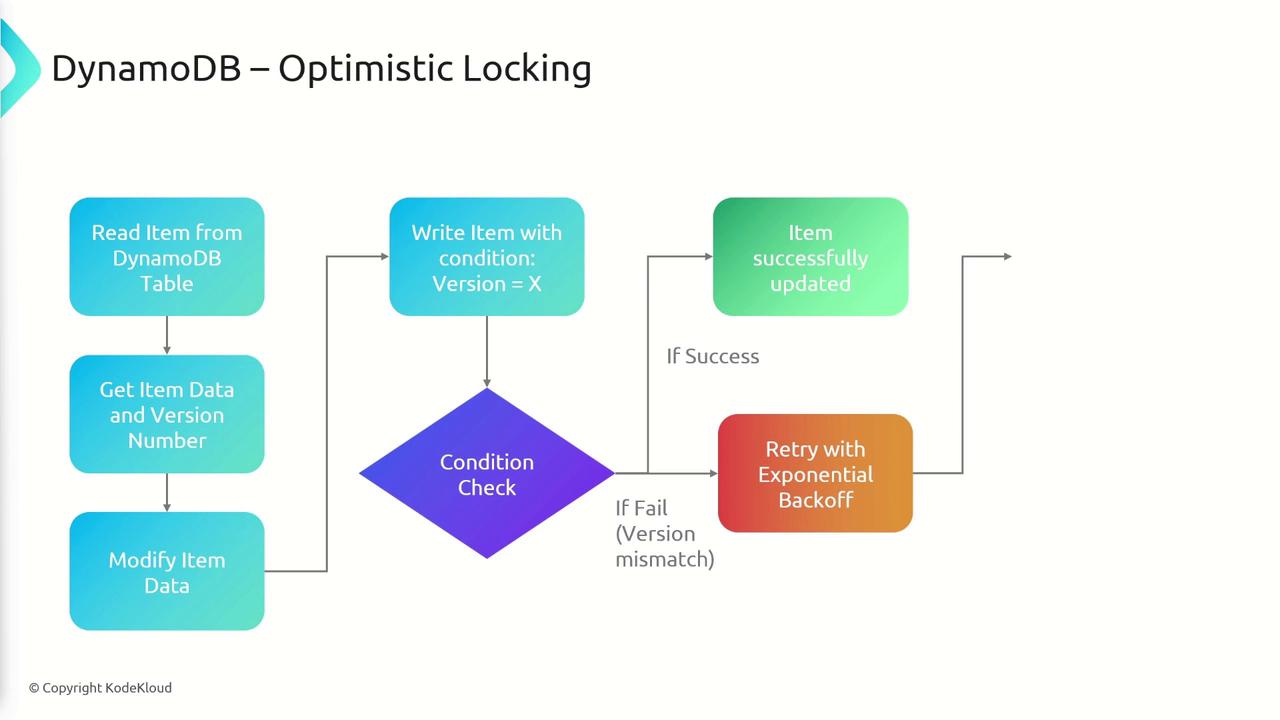AWS Certified Developer - Associate
Databases
DynamoDB Optimistic Locking
In this article, we explore the concept of optimistic locking in DynamoDB and learn how it helps maintain data consistency in concurrent environments.
Optimistic locking is a strategy where each item in your DynamoDB table contains a version attribute. This attribute is incremented with every successful update, ensuring that multiple users or processes do not inadvertently overwrite each other’s changes.
How It Works
Imagine you have an item in your DynamoDB table that starts at version one. When a user reads the item and applies changes, the item is updated to version two. If another user reads the updated item (version two) and then applies changes, it will correctly update to version three since the operations follow the sequential version increments—thus, no conflict occurs.
However, consider a scenario where two users simultaneously read the item at version one:
- The first user updates the item to version two.
- The second user, still holding the initial version one, also attempts to update the item, expecting it to change to version two.
Since the first update has already incremented the version, the conditional update from the second user fails, as the expected version does not match the current version. This is the point where optimistic locking prevents unintentional overwrites and avoids race conditions.

How Conditional Writes Work
When performing an update, DynamoDB uses a conditional write operation. This operation checks that the version number of the item being updated matches the version number that was originally read. If the condition fails, the update is aborted, indicating that another operation has modified the item.
Step-by-Step Process
The typical process for applying optimistic locking in DynamoDB is as follows:
- Read the item: Fetch the item along with its current version number.
- Modify the item: Apply the necessary changes to your data.
- Write with condition: Attempt to write the updated item using a conditional expression (e.g., "if version equals X"). This ensures that no other process has updated the item in the meantime.
- Increment the version: If the write operation succeeds, increment the version number of the item.
- Handle conflicts: If the operation fails due to a version mismatch, retrieve the latest version of the item and retry the update operation using an exponential backoff strategy.

Be Aware of Concurrency Issues
If multiple processes frequently update the same item, be careful to implement an adequate retry mechanism. Failure to do so may result in increased latency or frequent update failures.
How DynamoDB Manages Optimistic Locking
Under the hood, DynamoDB uses conditional writes to enforce version checks. The detailed flow is illustrated in the diagram below:
- Read an item from the DynamoDB table along with its current version.
- Modify the item data accordingly.
- Write the updated item back using a conditional expression (e.g., "if version equals X").
- If the conditional write is successful, the version number is incremented.
- In case of a version mismatch, the operation fails and can be retried after fetching the latest data with exponential backoff.

Conclusion
By utilizing optimistic locking, DynamoDB offers a robust mechanism to ensure data consistency and avoid conflicts caused by simultaneous updates. This technique is especially useful in distributed systems where race conditions are common. For further in-depth learning, check out the DynamoDB Developer Guide.
Understanding and properly implementing optimistic locking can significantly enhance the reliability and scalability of your applications dealing with high concurrency and complex data operations.
Watch Video
Watch video content